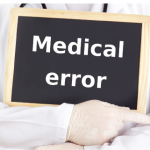The Institute of Medicine has reported that each year up to 98,000 deaths result from iatrogenic injury and error.1 Autopsy series have suggested a 15% error rate in the practice of medicine. These numbers are surprising and concerning and raise important questions about how we practice medicine. What kind of errors do we make as providers? How can we reduce the incidence of such occurrences?
Graber et al created a taxonomy that can help understand the issue of medical error.2 The investigators evaluated 100 internal-medicine diagnostic errors identified through quality assurance and autopsy discrepancies. Approximately half of the errors were diagnostic in nature and related to poor data gathering and faulty synthesis of information. The other half of the errors were systems issues, which were defined as technical failures as well as organization and policy issues such as abnormal tests not being communicated to the patient. There were six errors for each case reviewed; often, both cognition and systems issues were involved.
Rheumatology is considered the quintessential diagnostic specialty. Let’s look at what’s known about the cognitive part of this problem. How do clinicians diagnose illness, and what contributes to missed opportunities in this area of patient care?
Cognition
The diagnosis of medical conditions by providers requires a combination of experience, knowledge, and acumen. Critical thinking is at the core of this process and requires us to collect information, work through a problem, and reach a reasonable conclusion. Recent advances in cognitive psychology have provided a theoretical framework to understand decision making. As far back as Plato, the brain was felt to be divided into two components: a rational reasoning part and an emotional area with the rational in charge. More recently, it was thought that the cerebral cortex was the computer and the deeper limbic system was the area shared with animals, the instinctive emotional area. Cognitive theory now shows that these brain areas have evolved in unison and that there are really two systems that work together for decision making.3
In our day-to-day professional life, clinicians move between the two styles of decision making. Efficient doctoring requires frequent use of heuristics and occasional reliance on System II reasoning.
System I
The first diagnostic system, System I, involves pattern recognition and originates in the deeper part of the brain in dopamine-rich neurons. This part of the brain is an instinctual area that integrates life experiences, senses, emotions, and feelings and comes to an intuitive conclusion. Everyday life is full of such responses. Your choices regarding the color of your car or the person you marry are often gut-level decisions. Research has shown that this brain area is much more sophisticated than previously appreciated.



